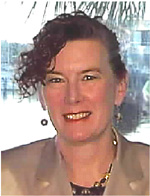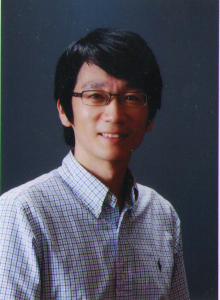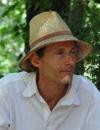Treavor BOYER – Paula COBLE – Jin HUR – Lieven DE LATHAUWER – Kathleen MURPHY–
Pierre COMON
***************************************
Treavor H. BOYER : The vision for our research group is to develop robust engineering approaches to the treatment of water at various stages in its life cycle so as to match water quality to the water-use activity, maximize water conservation, recover valuable materials, sequester harmful contaminants, minimize the production of waste byproducts, and advance the water–energy–food nexus. Specific to fluorescence spectroscopy, our interest is to characterize and track changes in aquatic dissolved organic matter (DOM) through drinking water treatment processes including ion exchange, metal salt coagulation, precipitative softening, membrane separation, and oxidation. The peak location and intensity of DOM fluorophores, in addition to dissolved organic carbon concentration and ultraviolet absorbance, can provide valuable information about the effectiveness of a water treatment process and the potential for DOM to affect downstream processes such as foul membranes, form disinfection byproducts, and enhance or inhibit corrosion. Fluorescence spectroscopy is also used to characterize DOM in waste streams like municipal solid waste leachate and natural aquatic systems such as dissolved organic phosphorus in wetlands. Other major research activities in our group include urine source separation to recover nutrients, separate pharmaceuticals, and achieve more sustainable wastewater management. (http://www.ees.ufl.edu/homepp/boyer/)
***************************************
Paula COB LE : My research is focused on the use of absorbance and fluorescence spectroscopy for the study of colored dissolved organic matter (CDOM) in natural waters. Understanding temporal trends in CDOM concentration and fluxes in rivers has become increasingly important due to the role of CDOM in water clarity, dissolved organic carbon flux, drinking water quality, and ecosystem health. Sources of CDOM from land include dissolution from soils, agricultural waste products, sewage effluents, groundwater discharge, and biological inputs from swamps, marshes, reservoirs, and phytoplankton. Factors that increase inputs from these sources include rainfall, river discharge, erosion, temperature, and waste and water management practices. Factors that decrease inputs include drought, biological consumption, and photobleaching. The composition of CDOM is determined by specific fluorophore components from agriculture, intact forest, wetlands, and sewage effluent, and can be used as a tracer of land use and land cover. Increasing population density and resultant land use changes may also alter fluxes of carbon and CDOM. Other applications of my research include Ocean Optics, satellite remote sensing of ocean color, verification of ballast water exchange, and development and deployment of multichannel fluorometers, including laser-based systems, in the environment.
LE : My research is focused on the use of absorbance and fluorescence spectroscopy for the study of colored dissolved organic matter (CDOM) in natural waters. Understanding temporal trends in CDOM concentration and fluxes in rivers has become increasingly important due to the role of CDOM in water clarity, dissolved organic carbon flux, drinking water quality, and ecosystem health. Sources of CDOM from land include dissolution from soils, agricultural waste products, sewage effluents, groundwater discharge, and biological inputs from swamps, marshes, reservoirs, and phytoplankton. Factors that increase inputs from these sources include rainfall, river discharge, erosion, temperature, and waste and water management practices. Factors that decrease inputs include drought, biological consumption, and photobleaching. The composition of CDOM is determined by specific fluorophore components from agriculture, intact forest, wetlands, and sewage effluent, and can be used as a tracer of land use and land cover. Increasing population density and resultant land use changes may also alter fluxes of carbon and CDOM. Other applications of my research include Ocean Optics, satellite remote sensing of ocean color, verification of ballast water exchange, and development and deployment of multichannel fluorometers, including laser-based systems, in the environment.
My other interest is Ocean Science Education. I recently took a two-year leave of absence from USF to spend two years at NASA HQ as a Program Scientist in Earth System Science Education. I have been involved in numerous education and outreach programs at the College of Marine Science, including Project Oceanography, COSEE-FL, Oceanography Camp for Girls, the Teacher Oceanography Workshop and an NSF GK-12 project.
***************************************
 Dr. Jin HUR : Recent Research Interest
Dr. Jin HUR : Recent Research Interest
My research interest is to characterize DOM in natural and engineered systems and evaluate the environmental impacts of DOM based on the DOM characteristics. In one research topic, I use fluorescence spectroscopy data to examine the temporal and spatial distributions of DOM in lakes and rivers particularly relying on fluorescence EEM-PARAFAC. Recent EEM-PARAFAC applications include the prediction of BOD and COD in urban river water affected by wastewater effluent, organic carbon source tracing for a recently constructed dam reservoir, and characterizing DOM changes during storm runoff. I often make effort to correlate the DOM fluorescence data with other environmental significances of DOM such as disinfection by-products, and heavy metal and organic pollutant binding properties. One of my recent studies was to use an advanced data treatment method called “two-dimensional correlation spectroscopy (2D-COS)” for exploring the structural heterogeneity and the kinetic behavior of DOM.
***************************************
Dr. Lieven De Lathauwer : L. De Lathauwer’s research concerns the development of tensor tools for engineering applications. It centers on the following axes:
– algebraic foundations: uniqueness properties of canonical polyadic decomposition, introduction of block term decompositions, various properties of low rank and low multilinear rank approximation;
– numerical algorithms: efficient handling of Jacobian and Hessian, exact search, optimization over manifolds;
– generic methods for signal processing and data analysis: signal separation, factor analysis, harmonic retrieval, blind equalization;
– particular applications: biomedical applications, telecommunication, and other.
Recently, Tensorlab http://www.esat.kuleuven.be/sista/tensorlab/ has been released, a Matlab toolbox for tensors and tensor computations.
***************************************


Dr Kathleen Murphy is a Postdoctoral Researcher with the UNSW Water Research Centre in the School of Civil and Environmental Engineering.
Kate’s primary research interests are in the application of chemometrics for discriminating among sources of chemicals in the environment. Most of her research to date has been of marine and freshwater aquatic systems, particularly the study of the chemistry and biology of ships’ ballast water in collaboration with the Smithsonian Institution in the USA, and recently at UNSW, the analysis of fluorescence in municipal water recycling schemes. In 2010, Kate commenced an APD at UNSW to investigate chemometric approaches to identifying annoying odours arising from industrial facilities. Due to the multidisciplinary and international nature of her research, she regularly collaborates with researchers in the USA and Europe.
***************************************
Pr Pierre COMON
 Pierre Comon is research director with CNRS, at http://www.gipsa-lab.grenoble-inp.fr. His reseach interests include the development of tensor tools for data mining in general, and for health and environment in particular. In this context, Blind Source Separation and Independent Component Analysis, which have been his main concern these last twenty years, may be seen as an application. Some tensor codes have been put online in 2009 and can be freely downloaded; see the « projects » tab at the speaker home page: http://www.gipsa-lab.grenoble-inp.fr/~pierre.comon
Pierre Comon is research director with CNRS, at http://www.gipsa-lab.grenoble-inp.fr. His reseach interests include the development of tensor tools for data mining in general, and for health and environment in particular. In this context, Blind Source Separation and Independent Component Analysis, which have been his main concern these last twenty years, may be seen as an application. Some tensor codes have been put online in 2009 and can be freely downloaded; see the « projects » tab at the speaker home page: http://www.gipsa-lab.grenoble-inp.fr/~pierre.comon


